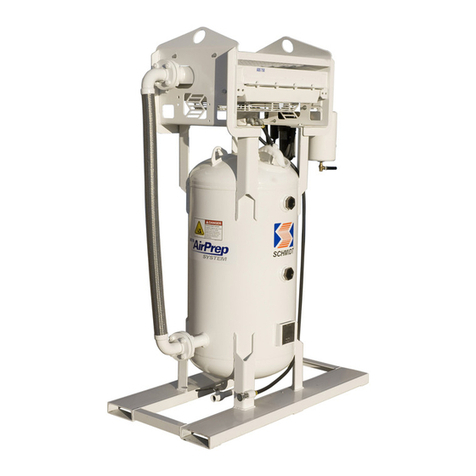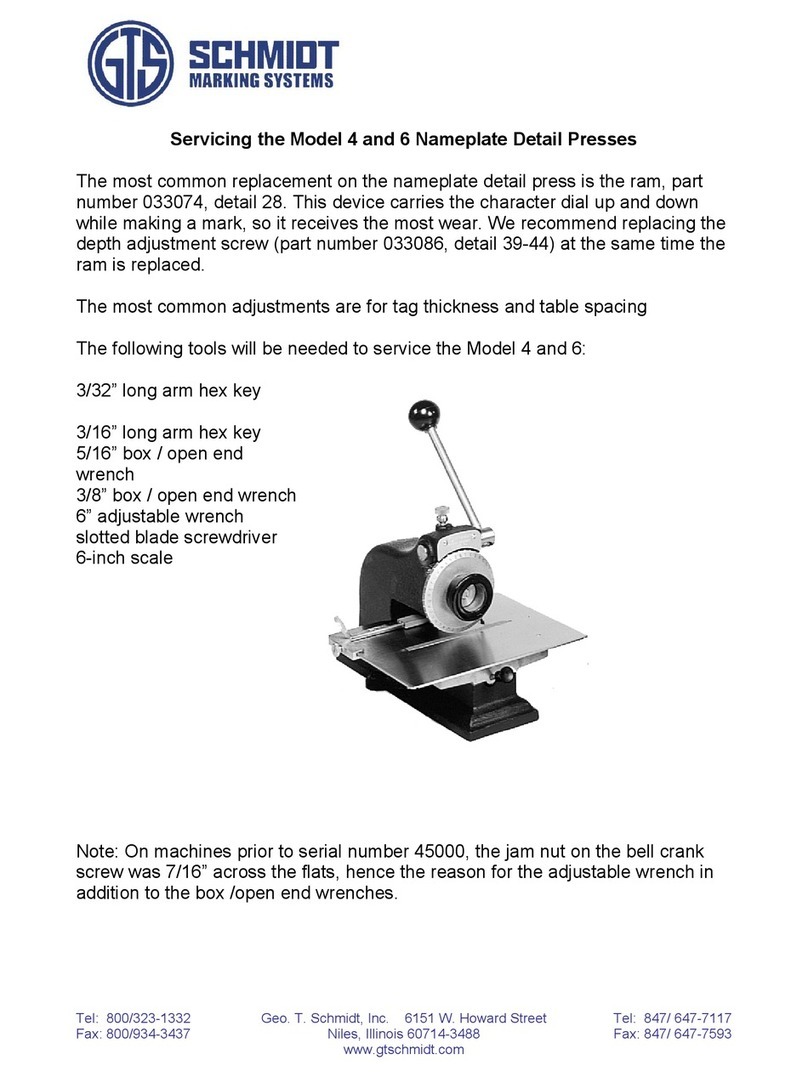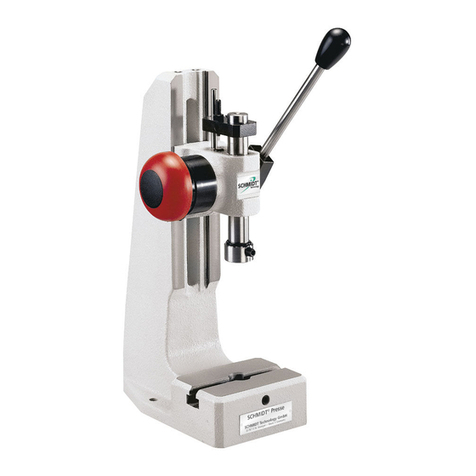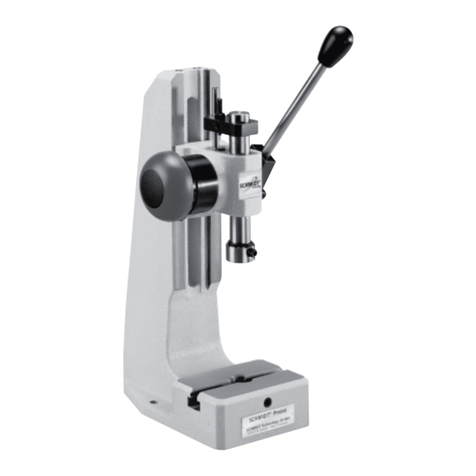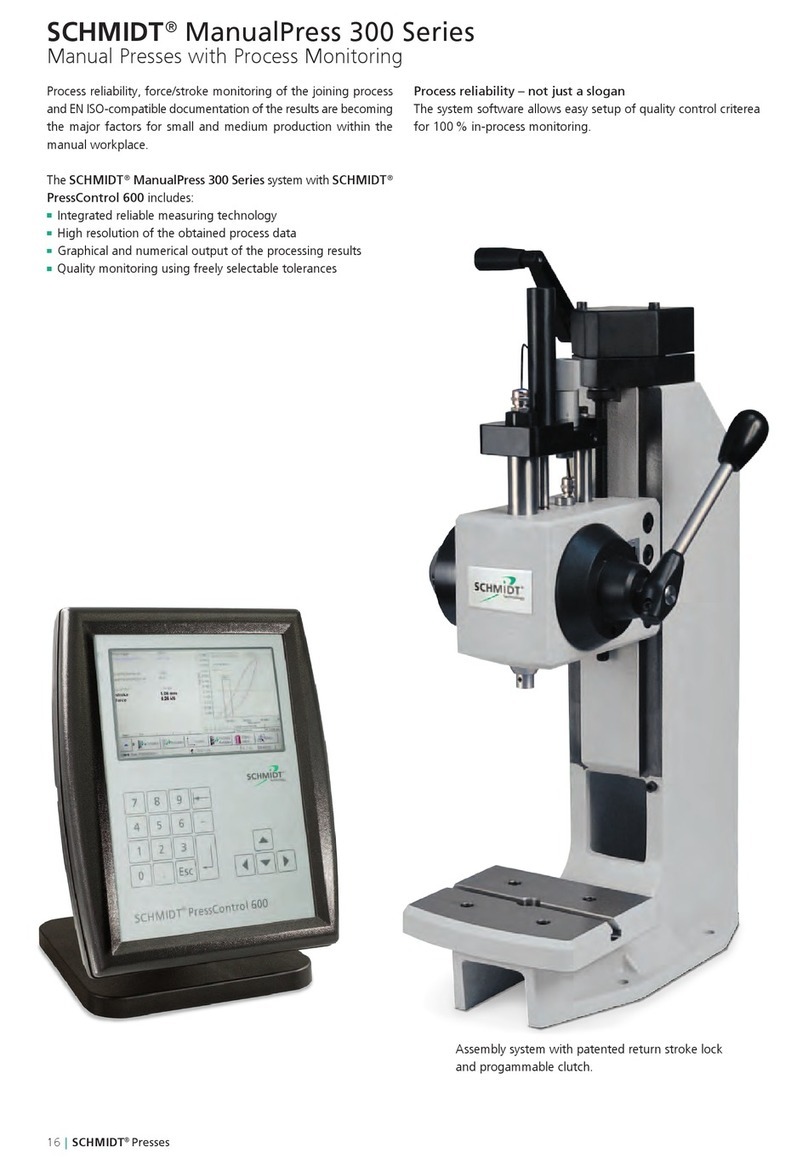1 Safety
4SCHMIDT®ElectricPress 343-345 –V2.1
1 Safety
The press is designed and built in accordance with the valid safety
regulations and state-of-the-art methods and is tested for function and
safety. The press is/will be a component of the press system.
To ensure operational safety, note:
Chapter "Designated use"
Chapter "Organizational measures of the owner"
Chapter "Residual risks"
Chapter "Standards and regulations"
Independently of the indications specified in this manual, the current country
specific regulations regarding work safety and health protection are valid.
1.1 Designated use
The press can be used as follows:
As component in a SCHMIDT manual workstation during pressing
processes with manual loading and unloading.
OR
As part of a press system together with SCHMIDT components for
automation. In this case, the press system/tool has to be designed in
such a way that is not possible to reach into the hazard zone.
Any other use for any purposes other than those described above is
considered contrary to its designated use. The manufacturer cannot be held
liable for damages resulting from this.
Please do not make any changes to the components. The manufacturer
cannot be held liable for damages resulting from this. These changes are at
the sole risk of the owner.
Designated use also includes
compliance with the documentation and
compliance with the inspection and maintenance instructions of the
manufacturer
1.2 Organizational measures of the owner
The press may only be operated in technically perfect condition.
The instructions concerning start-up, operation and maintenance described
in this manual must be observed.
This manual must be stored within easy reach at the workplace.
The persons responsible for the work on the press must have read the
manual and, in particular, chapter "1 Safety" before starting work. This also
applies to persons who work on the machine only occasionally.

